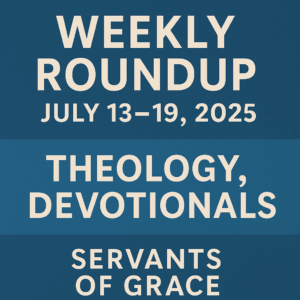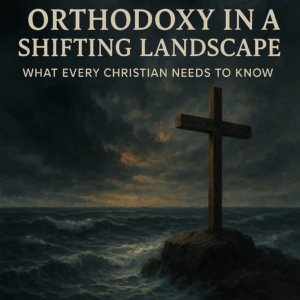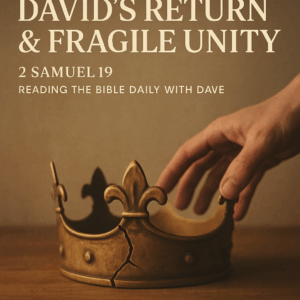⏱️ Estimated Reading Time: 5 min read
 Much ink has been spilled and much debate has raged concerning the Mosaic and New Covenants. Did Jesus abrogate the former covenant or did He renew that covenant and bring its intent and purpose to full completion? What is the relationship between the covenants if there is any relationship at all? These and many other related issues are addressed with great skill and biblical insight by Jason Meyer in his book The End of the Law: Mosaic Covenant in Pauline Theology.
Much ink has been spilled and much debate has raged concerning the Mosaic and New Covenants. Did Jesus abrogate the former covenant or did He renew that covenant and bring its intent and purpose to full completion? What is the relationship between the covenants if there is any relationship at all? These and many other related issues are addressed with great skill and biblical insight by Jason Meyer in his book The End of the Law: Mosaic Covenant in Pauline Theology.
As Meyer aptly notes in the introduction to his book, “Our understanding of how the old and new covenants relate largely determines our understanding of how the Old and New Covenants relate.” Many people struggle to grasp just what is old about one and new regarding the other. To that end, Meyer presents his response to that question in his thesis, that of “Paul conceives of the Mosaic (old) covenant as fundamentally non-eschatological in contrast to the eschatological nature of the new covenant.” It is not as though the old covenant had no purpose. What Meyer is presenting is the newness of the new covenant resides in the ushering in of Christ doing for us what we could never do for ourselves under the demands of the old covenant. Moreover, God “intervenes through His Spirit in the new eschatological age in order to create what He calls for in the new covenant.” Meyer spends the remainder of the book explaining in great detail what he means by those statements.
While all aspects of Meyer’s book are well worth reading, I want to focus this review on a couple elements I found most engaging. The first aspect of this book I found to be of great interest was Meyer’s discussion of the “Old and New Antithesis in Paul.” In this chapter, Meyer outlines the definition and usage of the key words for new used in the New Testament, namely neos and kainos, both which he notes “conveyed different nuances of meaning in the classical period.” Since the idea of a new covenant is relayed in the Pauline corpus, it is thus vital to grasp what this term “new” means and how it is applied to best understand what a “new covenant” is all about, especially in comparison to the old or former covenantal structure. Meyer exegetes a number of key passages in Romans, Ephesians, 1 and 2 Corinthians, and Galatians that use the term new, in particular those that frame the discussion of new against the words used for old, specifically archaios and palaios. His conclusion is that Paul “emphasizes the removal of or release from the “old thing,” and the advent and continuation of the “new thing”.
After diving into a number of key Pauline passages to further explore and elaborate on his main thesis, Meyer looks at the Mosaic Covenant from the perspective of the Old Testament and its terminology. This is the other chapter I found worthwhile given that an understanding of the purpose of the old covenant’s purpose from the pages where it was provided is of great importance. Meyer examines three key descriptions of the Israelites, namely them being rebellious, unbelieving, and stiff-necked. Such an attitude required a cure. The cure presented by Moses included receiving God’s Word into their hearts, loving and obeying God from their hearts, and finally instruction in the ways of God by the parents to the children so that the people of Israel would remain faithful. Meyer rightly notes that “The three elements (“receive,” “obey,” “teach”) provide a recipe for covenantal faithfulness.” If they would have remained faithful to that covenant, God had promised long life in the land of promise. Unfortunately, “God’s people never fulfill this obligation and suffer the curses of the covenant.” This required a new covenant wrought through the work of the cross so that God could transform the hearts of His people, something they could never do of themselves.
Thus, the old covenant always pointed to the requirement of the new. There was nothing wrong with the old covenant as God’s commands are always righteous and holy. The issue revolved around the inability of humanity to remain faithful to that covenant. As God had planned all along, the Messiah needed to come who could do for us what we could not do. The ushering in of the new covenant through the blood of Christ provided a means by which God would write His word on the hearts of His people as promised in Jeremiah 31. As Meyer so aptly notes, this eschatological intervention is what the new covenant is all about and it is what Paul discusses in his letters. As he saliently notes in the conclusion to this helpful book, Meyer reminds the reader that “the Mosaic covenant was meant to leads us to Christ as the end and goal of the Mosaic law.”
I highly recommend this book for those interested in a better understanding of the old and new covenants, how they relate, where they differ in purpose, and what all that matters for the believer. Accessible, scholarly, full of valuable footnotes and with a comprehensive bibliography for further study, this book is a valuable resource on what the law is all about and how such an important biblical concept should be understood and applied in our lives today.
This book is available for purchase from B&H Academic by clicking here.
I received this book for free from B&H Academic for this review. I was not required to write a positive review. The opinions I have expressed are my own. I am disclosing this in accordance with the Federal Trade Commission’s 16 CFR, Part 255 : “Guides Concerning the Use of Endorsements and Testimonials in Advertising.”



